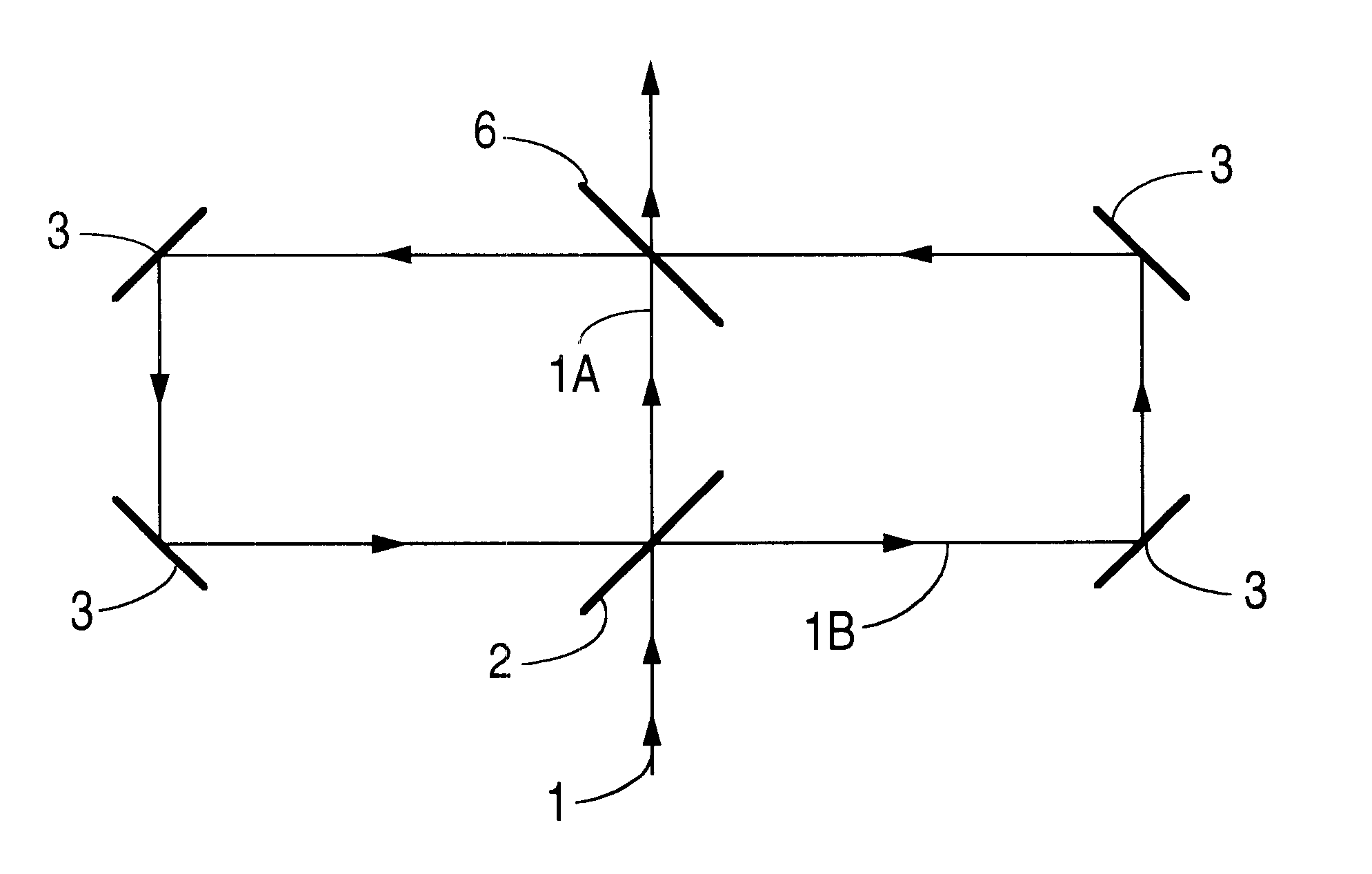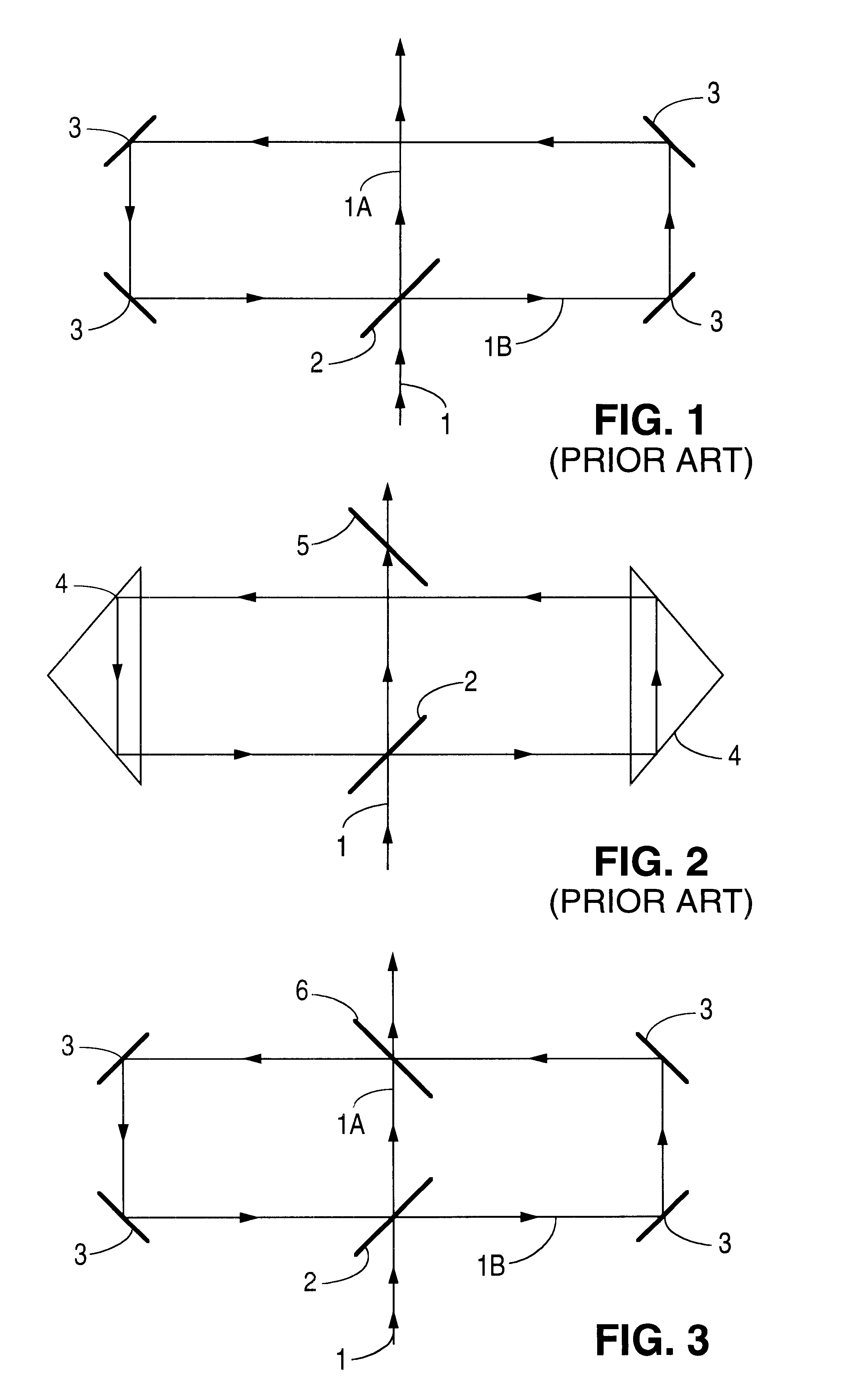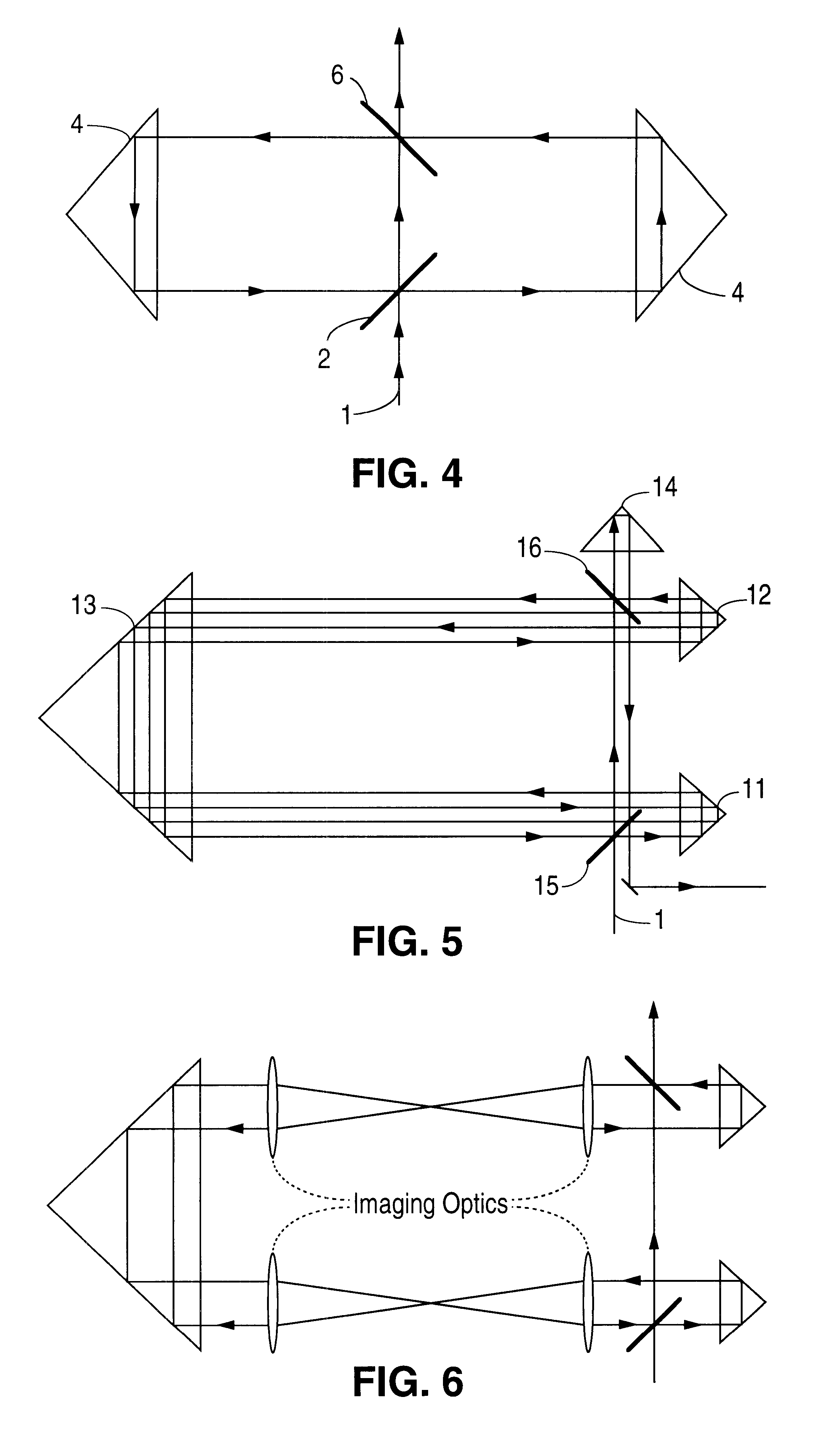Optical pulse stretching and smoothing for ArF and F2 lithography excimer lasers
a technology of excimer lasers and optical pulses, which is applied in the direction of laser details, optical resonator shape and construction, electrical apparatus, etc., can solve the problems of large optical lenses used, the laser pulse duration has an upper limit of a few tens of nanoseconds, and the problem of large optical lens use, etc. problem, to achieve the effect of smoothing the temporal pulse envelope, and reducing the cost of laser equipmen
- Summary
- Abstract
- Description
- Claims
- Application Information
AI Technical Summary
Benefits of technology
Problems solved by technology
Method used
Image
Examples
Embodiment Construction
The object of this invention is to stretch the emitted laser pulse of ArF-and F.sub.2 -excimer lasers by using various types of optical delay lines and, if necessary, imaging optics. Furthermore, using delay lines it is possible to shape and to tune the temporal beam profile. In order to achieve this there are various possible setups of optical delay lines.
In the deep UV spectral range it is difficult to achieve high transmission for the radiation that passes through a delay line due to high absorption and scatter losses on dielectrically coated mirrors. Therefore, it is necessary to use a method that employs a minimum of high reflection coatings. Especially for industrial applications a delay line setup with a minimum of adjustment sensitivity has to be chosen. Several possible configurations are depicted in FIGS. 3-6.
In FIGS. 3 and 4, a second partially reflective mirror (6) is provided which provides a second point for diversion of a portion of the laser beam into the delay circu...
PUM
 Login to View More
Login to View More Abstract
Description
Claims
Application Information
 Login to View More
Login to View More - R&D
- Intellectual Property
- Life Sciences
- Materials
- Tech Scout
- Unparalleled Data Quality
- Higher Quality Content
- 60% Fewer Hallucinations
Browse by: Latest US Patents, China's latest patents, Technical Efficacy Thesaurus, Application Domain, Technology Topic, Popular Technical Reports.
© 2025 PatSnap. All rights reserved.Legal|Privacy policy|Modern Slavery Act Transparency Statement|Sitemap|About US| Contact US: help@patsnap.com



